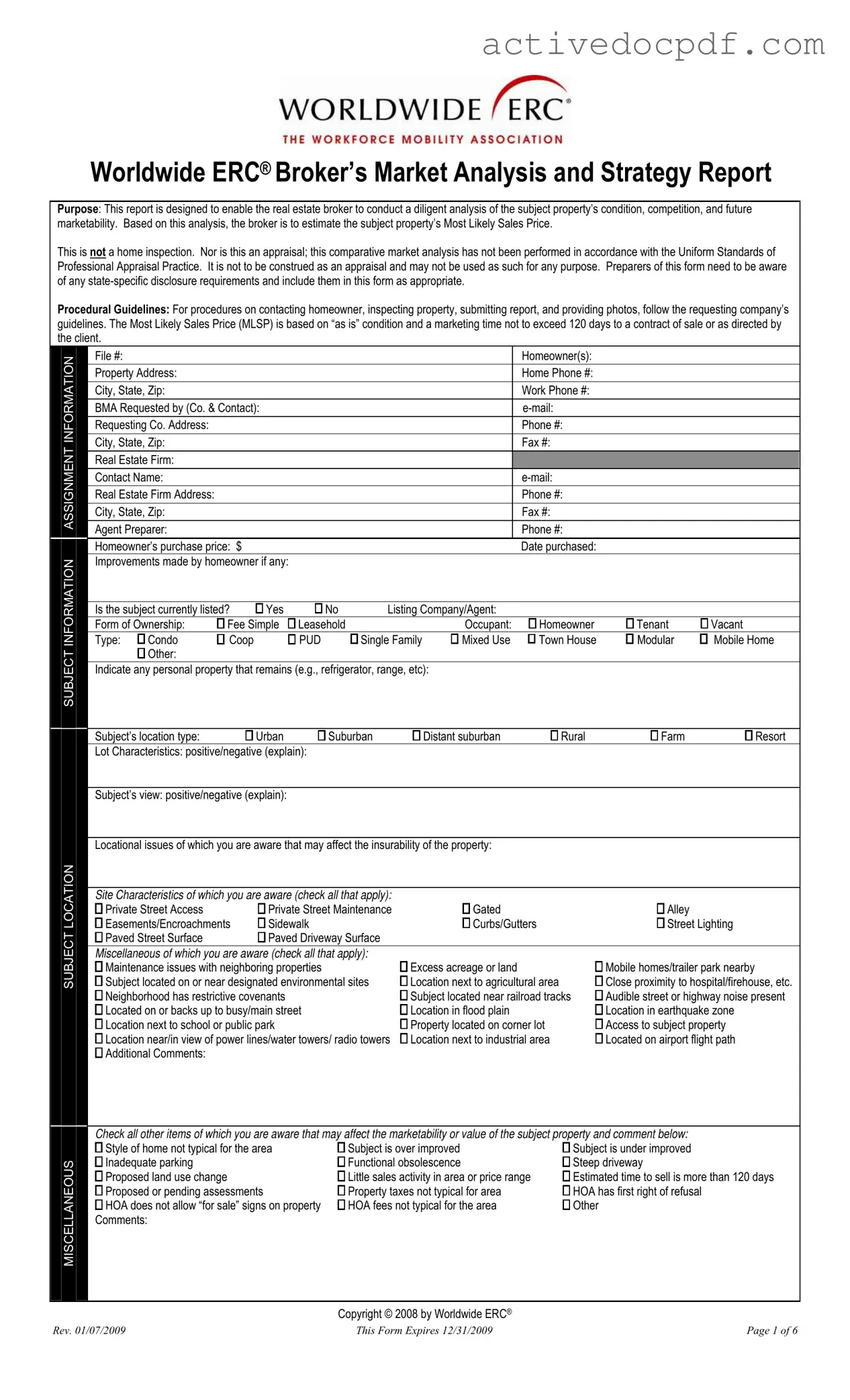Free Erc Broker Market Analysis PDF Form
The Erc Broker Market Analysis form is a crucial tool for real estate brokers, designed to help them assess a property's condition, competition, and potential marketability. By conducting a thorough analysis, brokers can estimate the Most Likely Sales Price for the property, which is essential for both sellers and buyers. This form is not an appraisal or home inspection, but rather a comparative market analysis that provides valuable insights into the property’s value.
Edit Form Online
